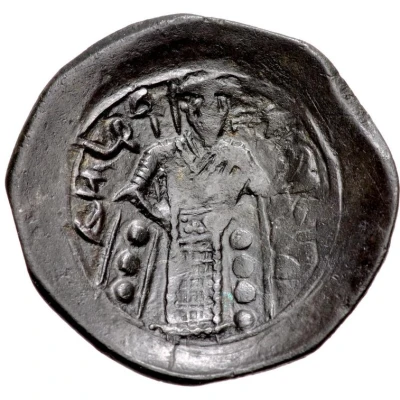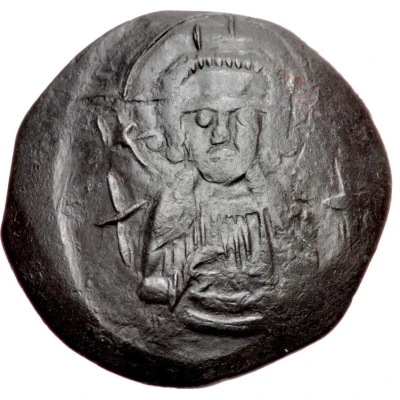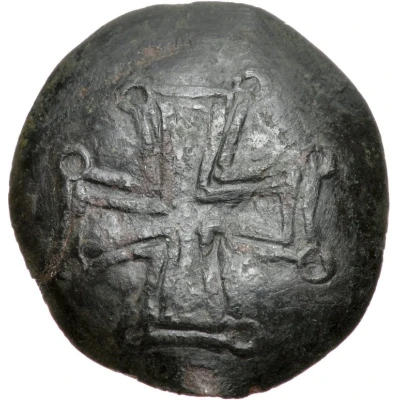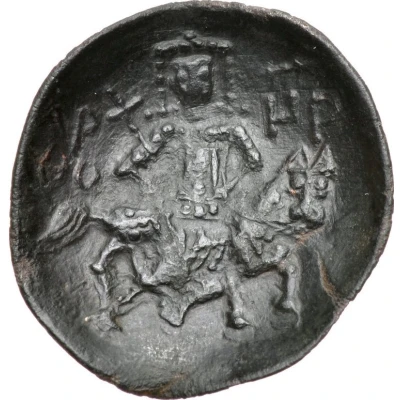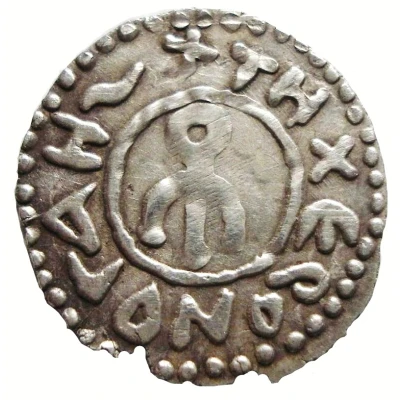
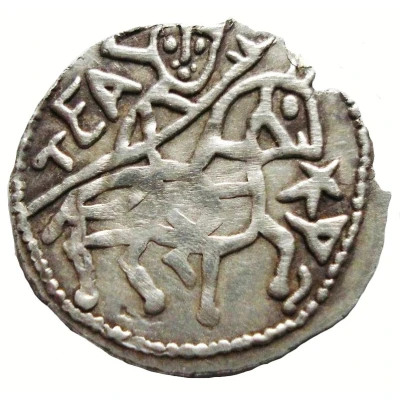

© Classical Numismatic Group, Inc.
1 Dirham - Chaka Saqci ND
| Silver | 1.3 g | 20 mm |
| Issuer | Second Bulgarian Empire |
|---|---|
| Tsar | Chaka (1299-1300) |
| Type | Standard circulation coin |
| Years | 1299-1300 |
| Value | 1 Dirham |
| Currency | Grosh (1185-1396) |
| Composition | Silver |
| Weight | 1.3 g |
| Diameter | 20 mm |
| Shape | Round (irregular) |
| Technique | Hammered |
| Orientation | Coin alignment ↑↓ |
| Demonetized | Yes |
| Updated | 2024-10-04 |
| Numista | N#150770 |
|---|---|
| Rarity index | 95% |
Reverse
Chaka as a horseman
Lettering: TEAKAΣ or TEAKA
Translation: CHAKA
Edge
Rough
Comment
1 Dirham - Chaka /Son of Noghai/ - Emperor of Bulgaria - 1299-1300 AD (Saqci mint)Chaka did not long enjoy his new position of power as Bulgarian Emperor, as the armies of Toqta followed him into Bulgaria and besieged Tărnovo. Theodore Svetoslav, who had been instrumental in assisting Chaka's seizure of power, organized a plot in which Chaka was deposed and strangled in prison in 1300. His head was sent to Toqta, which in turn secured Theodore Svetoslav's position as the new emperor of Bulgaria. It seems that Theodore Svetoslav's cooperation contributed to the withdrawal of Mongol interference in Bulgaria.
The scarse coin is minted in Saqci /Isaccea-North Dobroudja, Romania). The style of this type is more medieval Bulgarian than Islamic. So this issue was struck in Saqci by Chaka, during the short time between the death of his father Nogay (A.H.699) and his own death in the hands of the Bularian ruler Sviatoslav (A.H.700), that's between September, 28, 1299 and September, 6, 1301.The legends in Greek and the cross appear on this issue as the people under the rule of the Nogayds - including some early Romanians ... - were familiar with the Byzantine culture and religion, so they would understand and accept such coins easier.
The excessive rarity of these coins is easy to explain. Both Nogay and his son Chaka were "usurper" khans (they actually took this title - Nogay issued coins with the legend "khan al'adil Noghayan") so after they were defeated by the khan from Saray, Toqta, they suffered a kind of "damnatio memoriae", so any testimonies from their rebellion were destroyed or transformed. It is very likely that the coins of Nogay and Chaka - struck in fairly small amounts, anyway - were hunted and melted down and from the resulting metal Toqta issued coins bearing his name. The name of Chaka is written as "Τζακας" following many rules. As “Τζ” was pronounced “Ч”-“Сh” in Pontic dialects of Greek, as “epsilon” in the written form was not “E” but “Є”, as “sigma” was not “Σ” but “C”, taking the star for "K", we have the following transcription: ΤΖΑΚΑC. That seems to be “E” is “Z”.
Interesting fact
The 1 Dirham - Chaka (Saqci) ND (1299-1300) coin from the Second Bulgarian Empire was made of silver, which was a valuable and durable material at the time. The use of silver in coins was a common practice in many ancient civilizations, as it was seen as a symbol of wealth and prosperity. The fact that this coin was made of silver suggests that it was a significant denomination and was likely used for large transactions or as a store of value.
